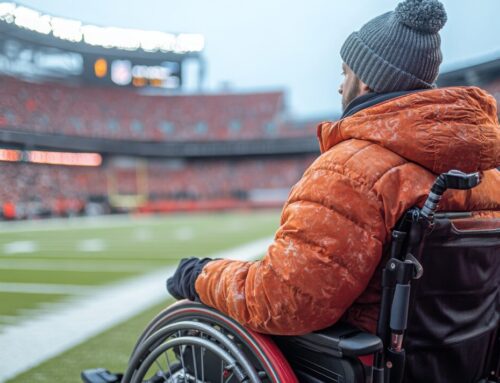Last Updated on February 9, 2023 by ReTurf
“Thatch” in artificial turf refers to the addition of shorter blades, typically with a brown or yellow hue, among the regular green grass blades. While it’s not commonly talked about, thatching is an especially important aspect to consider for those looking at recycled artificial turf for sale.
In this guide, we’ll dive into the details of thatching, explain why it’s crucial, and highlight the benefits—including its impact on appearance and its particular importance in used and recycled artificial grass.
Why is Thatch So Important?

As mentioned above, thatching is the process of adding a layer of shorter, brown and yellow blades to the surface of fake grass. The thatching layer is purposefully designed to imitate the look of a small amount of dry and dying grass in a natural lawn—creating a more desirable and realistic appearance.
Wait—Isn’t Thatch a Bad Thing?
A certain amount of thatch is desirable in a natural grass lawn to provide support and prevent soil compaction. It’s excessive thatch can become a problem, leading to lawn damage, an unhealthy lawn, and an undesirable dry/dead look.
In artificial turf, however, the purpose of thatching is to add just the right amount of depth and texture to create an extremely realistic look.
This carefully balanced amount of thatching provides a more natural appearance, similar to a well-manicured natural grass lawn, without reading to the human eye as “too green” or “too perfect” to be real.
It can also help to blend the turf into the surrounding landscaping, further making the synthetic turf look more like natural grass.

By achieving this delicate balance, artificial turf with thatching is able to provide an attractive, low-maintenance alternative to a traditional natural grass lawn.
Thatching in Recycled Artificial Turf
Thatching is an important aspect of premium used synthetic turf, as it helps to maintain the appearance and quality of the product. When purchasing recycled artificial grass for projects where appearance is paramount, look for used turf products that have been professionally reclaimed and rehabilitated, that also include a layer of thatch.
Combined with the comparably softer blades of recycled artificial grass, this can make used turf look even better than new turf in some cases.
What is a “Root Zone” in Artificial Turf?
A root zone in artificial turf is a type of thatching located at the bottom of the grass blades and works together with the infill layer to provide support and prevent compaction. It even resembles the root structure of natural grass—with similar color variations.
Final Thoughts

Thatch is an important aspect of professional-grade artificial grass; one that people interested in recycling artificial turf should be aware of when they’re comparing different products.
Professionally recovered, rehabilitated, and recycled artificial turf with a layer of thatch and/or a root zone can have a comparable or even superior appearance and quality compared to brand new artificial grass.
Thatching is an important factor to consider when purchasing used artificial turf—and should not be overlooked.



